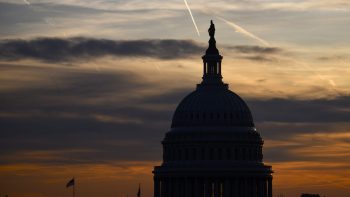
Many Gen-Xers have zero retirement funds. What can we do to address America’s retirement crisis?
Share Now on:
Many Gen-Xers have zero retirement funds. What can we do to address America’s retirement crisis?

Gen-Xers, those born between 1965 and 1980, are falling behind when it comes to saving for retirement. The typical household holds only $40,000 in retirement savings, according to a new report from the National Institute on Retirement Security.
The issue is exacerbated when you break down savings by income level and race. The bottom half of earners only have a few thousand in savings, while 40% of Gen-Xers have retirement savings accounts with zero balances.
The report explained that Gen-Xers have dealt with stagnating wages and greater student debt as more workers attained four-year college degrees than their predecessors. This cohort also entered the workforce when defined-contribution plans, like 401(k)s, began to overtake defined-benefit pension plans.
Only 55% of Gen-Xers participate in an employer-sponsored retirement savings plan.
“The big challenge is that the defined-contribution system just doesn’t work for a lot of people,” said Tyler Bond, research director for the NIRS and a co-author of the report.
The barriers to participation
Bond said that when Gen-X workers do have access to a retirement account, they save at least some money. But many don’t get the opportunity to participate in one. Sixty-two percent of Gen-Xers worked for an employer that sponsored a retirement plan, according to the report.
“At the most basic level, the employer just doesn't sponsor a plan at all, and that could be for a variety of reasons,” Bond said. “It could be that they're a small employer and they don't want to deal with the administrative burden of sponsoring a plan.”
Some employers, if they do offer one, may also have eligibility rules for part-time workers that either prevent them from accessing one or require them to work a minimum number of hours, explained the report.
A total of 12% of Gen-Xers worked part-time in December 2020. Broken down by race and gender, Hispanic women worked the highest part-time rate at 21%.
The report examined the percentage of Gen-Xers who have failed to meet certain retirement savings targets, based on guidelines from Fidelity, which outlines what multiple of your salary you should have earned by a certain age. Overall, 62% of Gen-X men and 64% of Gen-X women have saved less than 10% of their retirement savings target.
“The numbers are just bad across the board. I think that's just a real stark indicator that even among people who are saving, they're just not saving enough,” Bond said.
What we lost when we moved away from pensions
Only 14% of Gen-Xers are in a defined-benefit pension plan, which has been on the decline in the private sector over the past few decades. (However, many public-sector employees still have access to pension plans, Bond noted.)
Compared to 401(k)s, pensions pay out a set amount of money every month after you retire, regardless of how long you live.
“A defined-benefit plan has a much better portfolio. You get more return for least risk because it's bigger, it's run by professionals, it's more diversified,” said Teresa Ghilarducci, a professor of economics at the New School for Social Research who’s also on the academic advisory board for the NIRS.
She also noted that you can’t take out money from your pension for emergencies, which will allow your money to continue accumulating.
With 401(k)s, the burden of managing it falls on the worker. Ghilarducci said the rate of return on assets for Gen-Xers isn’t as high as it could have been because they’ve had to pay high fees and have moved money in and out of their accounts.
Why did we move from pensions to 401(k)s in the first place?
The modern 401(k) arose out of a provision in the United States Revenue Act of 1978 and wasn’t intended to be the primary way we save for retirement.
“It's important to keep in mind why the 401(k) plan was created in the first place. It was created to be a supplemental savings plan for highly compensated employees who already had a pension,” Bond said.
401(k)s — along with 403(b)s and similar accounts — have become the most common type of retirement account.
The National Public Pension Coalition explained that regulatory burdens, a result of laws passed under the Ronald Reagan administration, pushed private companies away from pension plans, while broader economic forces — like a decline in unionization — also contributed to the decline.
If pension plans were still as prevalent as they used to be, Bond said he thinks there would still be issues with our ability to save for retirement.
“The reality is even at the peak of pension offerings in the private sector…there were still large numbers of workers in the private sector who were never covered by a pension,” he said. “So we would still need to be helping them prepare for a secure retirement.”
He noted that low-income workers, in particular, had limited access to pension plans.
But he thinks the dire state of retirement savings wouldn’t be as severe as it is now. He pointed out that the overall decline in pension plans has harmed middle-class workers.
How we can tackle the country’s retirement crisis
Experts, along with the report, said there are various policy solutions that could or already have been implemented to address the lack of retirement funds.
Bond said Congress should, once and for all, work to shore up the Social Security trust fund, which is projected to be depleted in 2033.
“If the trust fund were to be depleted, Social Security still would be able to pay benefits, but those benefits could be reduced by 20%-25% across the board if Congress chooses not to use other resources to support current benefit levels,” according to the report from the National Institute on Retirement Security.
Ghilarducci said there’s broad consensus from the public to increase Social Security benefits and eliminate poverty as the elderly retire. Ghilarducci said U.S. House Rep. John Larson of Connecticut has “politically and economically sound” proposals to increase revenue for Social Security.
Larson authored the Social Security 2100 Act, which would change the program’s cost-of-living adjustment to better reflect inflation and cut taxes for middle-income beneficiaries, among other reforms. It would achieve this by expanding the payroll tax on earnings above $400,000 and closing a tax loophole.
One promising development is the rise of state-facilitated retirement programs. They provide plans to workers whose employers do not offer one, according to the NIRS’ report. Nineteen states offered such a plan as of June 2023, the report noted, which include California, Connecticut, Illinois, Maryland and Oregon.
The assets for these five programs total almost $914 million as of June 2023, while the number of funded accounts has almost reached 695,000, according to a monthly report from Georgetown University’s Center for Retirement Initiatives.
Congress has also passed legislation in recent years that would help part-time workers. The report said that Secure 2.0, building upon a previous act, will allow part-time workers to participate in a 401(k) or 403(b) plan if they’ve worked at least 500 hours per year for two consecutive years.
On top of that, Secure 2.0 transformed a federal retirement savings tax credit for low- and moderate-income workers into a matching contribution, which will take effect in 2027. The federal government will make a matching deposit into your account up to a certain amount as long as you make under a certain threshold.
Ghilarducci added that lawmakers have been working on a bipartisan bill that would create a federal savings plan to reach those without access to one from their employer.
She said that she’s both “pessimistic and optimistic” about the state of retirement savings.
“I'm pessimistic because we waited too long to fix this problem. If we had decent institutions, where people who are in their 30s and 40s could save safely and steadily for their retirement, we would not be facing this big retirement crisis that we are in and that we're going to face in the next 10 years,” Ghilarducci said. “But I’m very optimistic because people know that if we don't do anything, the numbers of people who are poor and old age are going to increase by the tens of millions.”
And those older Americans account for a large share of votes in elections.
There’s a lot happening in the world. Through it all, Marketplace is here for you.
You rely on Marketplace to break down the world’s events and tell you how it affects you in a fact-based, approachable way. We rely on your financial support to keep making that possible.
Your donation today powers the independent journalism that you rely on. For just $5/month, you can help sustain Marketplace so we can keep reporting on the things that matter to you.


















